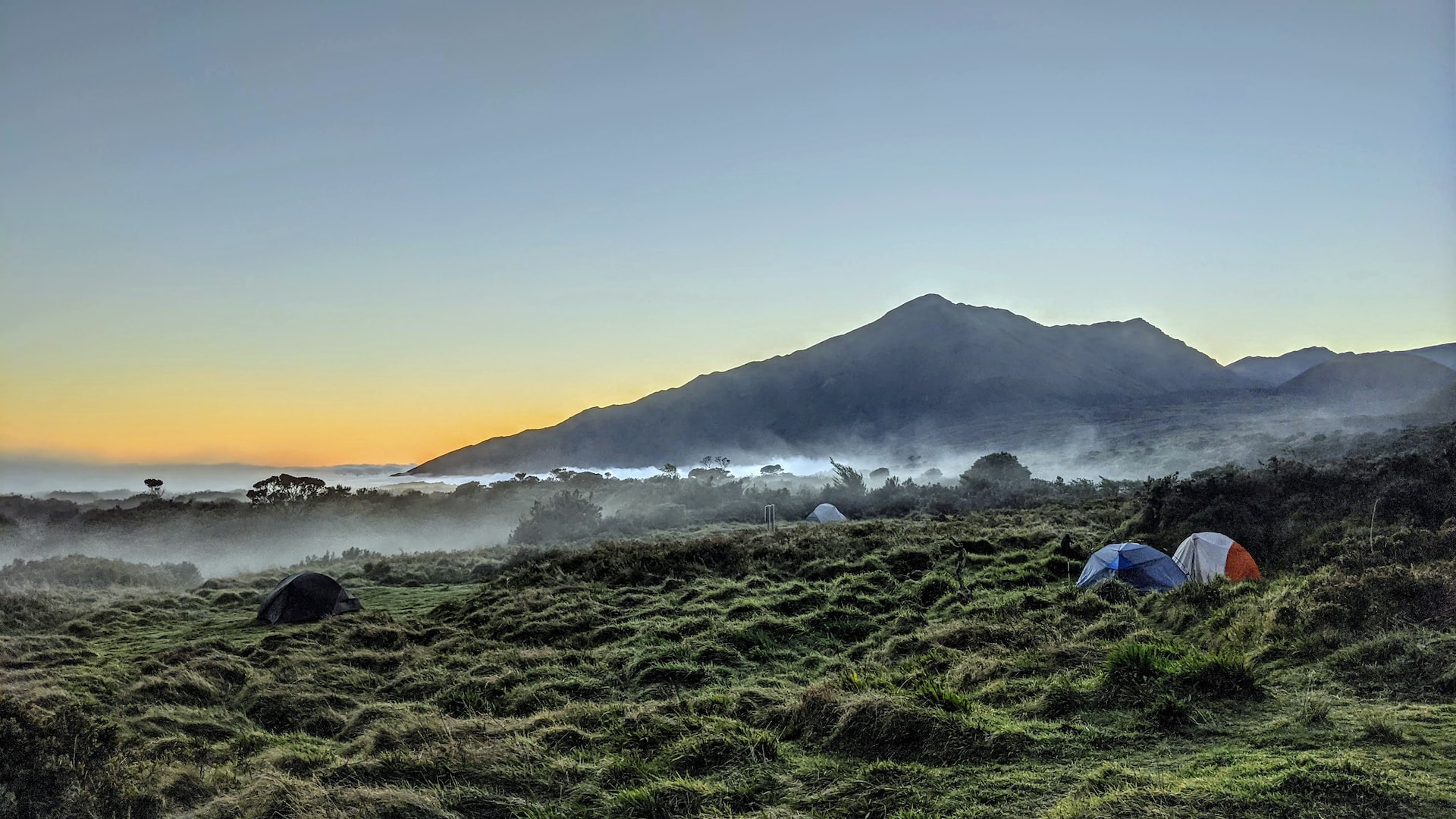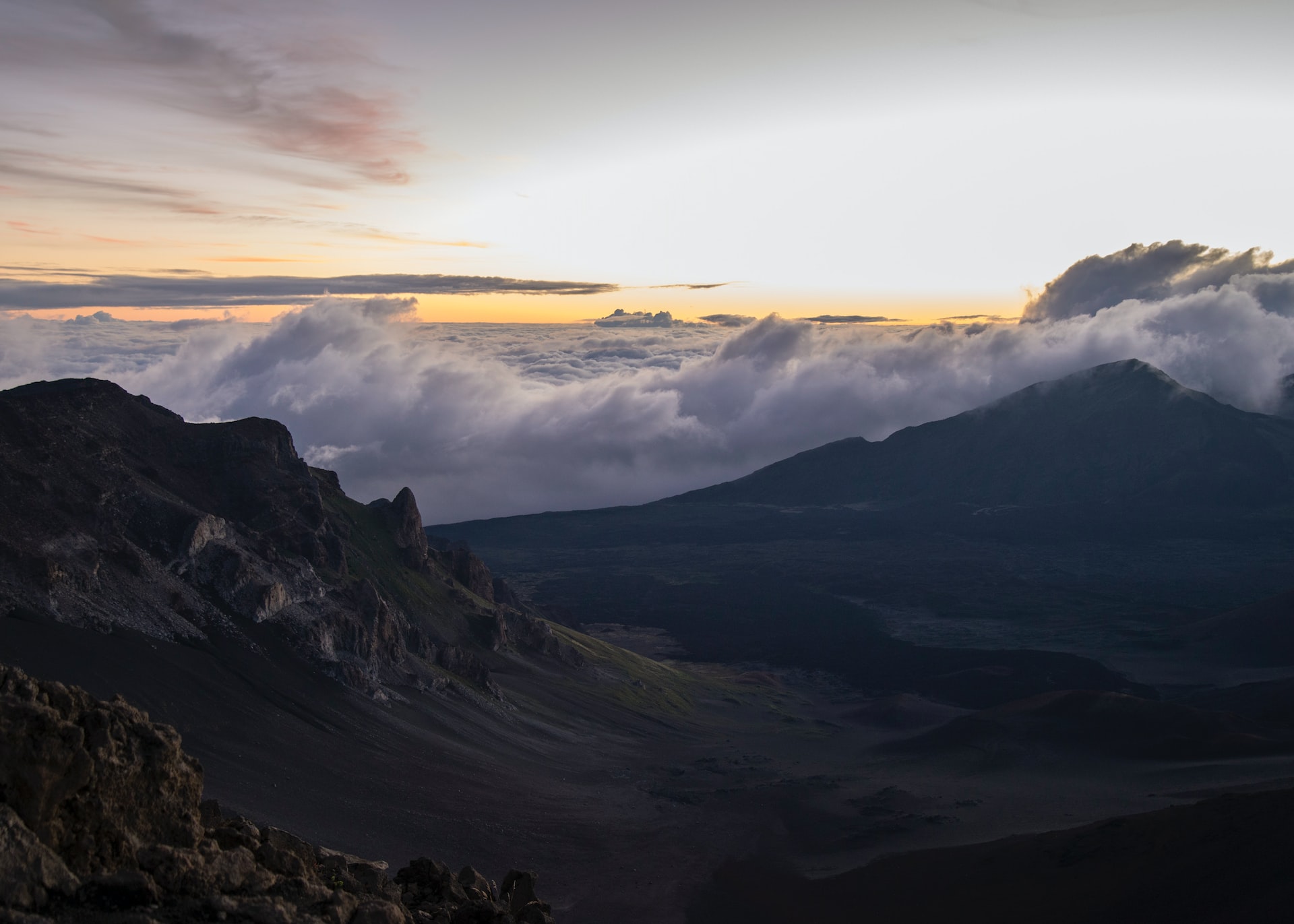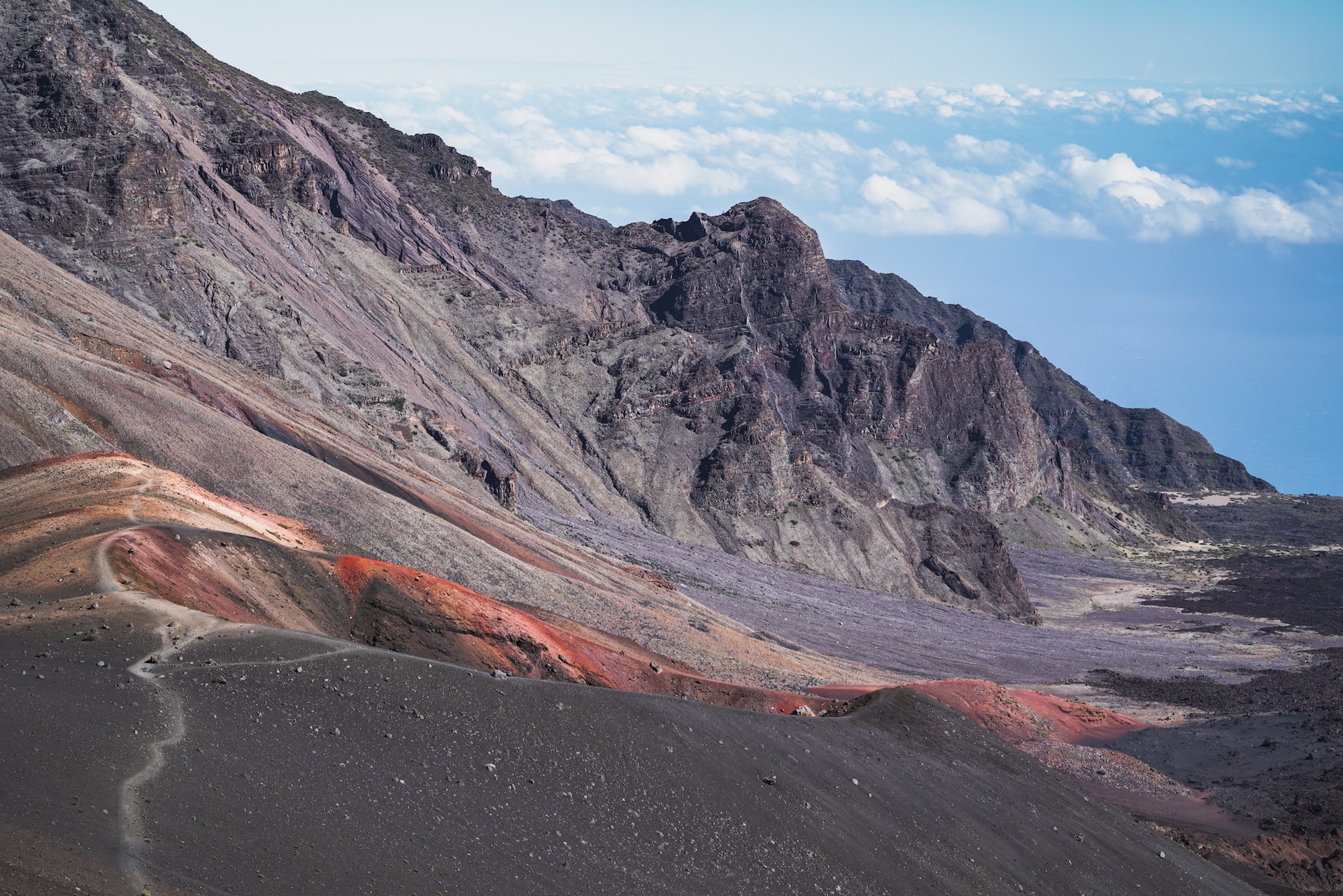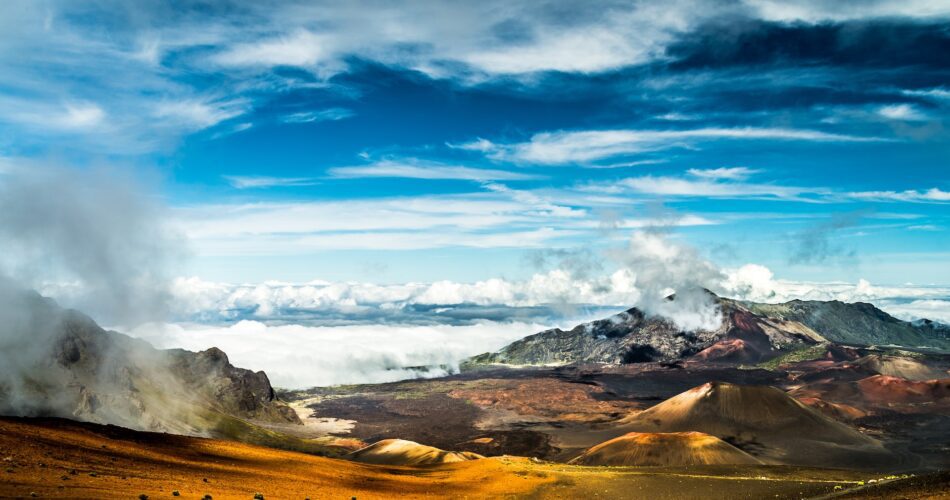Red Hill Haleakala is a massive shield volcano on the island of Maui in Hawaii, with a towering height of 10,023 feet. It is one of the best places in the world to stargaze, with its high altitude and clear skies allowing you to see stars and constellations.
Are you ready for a wild ride to the top of Red Hill Haleakala? Hold on tight because we’re about to journey to one of the most awe-inspiring destinations on the planet! Red Hill Haleakala, also known as the “House of the Sun,” is a massive shield volcano on Maui island in Hawaii. With its towering height of 10,023 feet, it’s no wonder that this majestic peak has been the center of Hawaiian culture and mythology for centuries.
Have you ever heard of stargazing at a volcano? That’s right, Haleakala’s summit is one of the best places in the world to stargaze. With its high altitude and clear skies, you’ll be able to see stars and constellations that you never even knew existed. Can you imagine how magical it will feel to be surrounded by the glittering night sky while standing on top of an active volcano?
Introduction
Located in Haleakala National Park on the Hawaiian island of Maui, Haleakala is a dormant volcano. The landscape of Haleakala includes many species of flora and fauna typical of Hawaii’s biota. Many visitors come to this area to enjoy the outdoors and take in the sights. This park is also frequented by local researchers interested in learning more about the native flora and fauna.
Red Hill, Haleakala, is a popular destination in Haleakala National Park. This is the peak of Mauna Haleakala, and from its observatory, you can see the entirety of the Big Island. Many visitors prefer to visit at night to take advantage of the wide range of available vistas when light pollution is less of an issue. Thanks to the peak of Puu Ulaula, you can also see incredible sights during the day.
It can be a challenging hike to reach the peak of Red Hill. Some people spend a couple of hours making the ascent. Everyone going on the hike should be prepared with plenty of water, sturdy footwear, and sun protection. Remember that while the beaches of Hawaii may be warm, the higher elevations may be much cooler. To that end, you could bring along some warmer layers.

Haleakala National Park
Many visitors also enjoy taking the time to enjoy a picnic at the peak. People often use small backpacks to carry food, water, and sunscreen because it can be difficult to carry a basket while hiking. Haleakala is home to a wide variety of additional attractions. If you’re looking for a little easier hike, White Hill could be the place for you. From its apex, you can take in a breathtaking 270-degree panorama of the beautiful Big Island, and the sights are just as spectacular as those from Red Hill.
Red Hill Summit Trail
Are you ready to fly to new heights and see the beauty of Haleakala National Park in Maui, Hawaii, on the Red Hill Summit Trail? This easy 0.3-mile loop trail is a dream come true for people who love nature and people who want to try new things.
At 10,023 feet, the Red Hill Summit Trail gives amazing views of Haleakala Crater, the Haleakala Observatory, and all of west Maui. And did we mention that it’s the highest point on Maui? If you want to hike into the crater via the Keonehe’ehe’e (Sliding Sands) Trail, this trail is a great way to get used to the high altitude. Due to the high altitude, walking can be hard because there isn’t as much oxygen, but don’t let that stop you! Just slow down and enjoy the ride.
But wait, it gets even better! Due to the lack of light pollution and the atmosphere, the Haleakala Summit is the fourth darkest place in the world. This makes it a great place to take pictures of the Milky Way and other things in the sky. And if that wasn’t enough, the Haleakala Observatory is close to the top. The University of Hawaii and other groups have used it for astrophysical experiments for decades.
How To Get Into Red Hill Haleakala?
Are you ready for a drive you’ve never had before? Then get ready for the Haleakala Highway, which is a twisty, heart-pumping 10-mile trip to the top of Haleakala. With beautiful pull-offs and views, you’ll want to take your time and enjoy every minute of the 1.5–2.5-hour trip from most Maui hubs.
But what if you don’t have a car or don’t want to drive on the roads that go back and forth? No problem! Just sign up for one of the many tours that will take you to the top. You can sit back, relax, and take in the beautiful views without worrying about the wheel.

Haleakala Crater United States
When you go to Haleakala National Park, you have to buy one. It’s good for 3 days after you buy it. The fee to get into the park is $30 per private vehicle and $15 per person on foot or on a bike. Make sure you have a recreational use pass before you hit the road or get on a tour bus.
If you want to go to more national parks, you might want to buy one of the available annual passes. Check the Haleakala National Park website for the most up-to-date information on how to get in and how much it costs.
Turn left out of the parking lot to continue on Hwy 378 past the Haleakala National Park Visitor Center; at mile marker 21, you’ll reach another crossroads. You should turn right if you want to get to the summit’s parking lot. Note that the left road leads to the restricted areas of Science City and the observatories. The summit parking lot can be found in Puu Ulaula’s relatively shallow crater (Red Hill).
Pa Kaoao (White Hill), which can be found below the Visitor Center, is not to be confused with this. Look around at some of Pele’s flaming projectiles before you climb the ramp to the peak. Lava fragments were propelled into the air during eruptions and cooled en route to the ground, where they eventually hardened. The largest section measures some four or five feet in diameter!
You can access the shelter via a set of stairs or take a ramp from the far end of the parking lot. The Big Island’s two highest volcanoes, Mauna Loa and Mauna Kea can often be seen poking their peaks through the clouds to the southeast. Haleakala’s current peak elevation is 10,023 feet, but it used to be much higher.
Haleakala has been eroded over thousands of years, the caldera has collapsed quickly, and the island itself has slowly subsided, all of which have contributed to its shrinkage (sinking into the ocean bed). Haleakala’s peak was likely between 13,000 and 14,000 feet above sea level, making it higher than any of the Big Island’s active volcanoes today.
Science City can be seen to the southwest, beyond the park’s borders, on the next cinder cone of the rift. The observatories are used for a variety of astronomical purposes, including satellite tracking, moon wobble measurement, and other space-related studies. None of the high-altitude observatories allow visitors, and the area is largely off-limits to the general public.

Haleakala Crater Hawaii USA
Many hardy tourists make the journey to Haleakala in the wee hours of the morning to witness the world-famous sunrise from the mountain’s summit, which is revered as the sun’s altar. Unfortunately, many visitors are unprepared for the extreme cold and sometimes strong winds they will encounter at the peak. Some foolish visitors brave temperatures of 20°F to 40°F while dressed only in shorts, a T-shirt, and a bath towel borrowed from their hotel. In order to learn more about the Haleakala Summit Area, please visit this page.
The demigod Maui is responsible for the sun’s slow rise, which has left early risers shivering. On the park’s entrance sign, you may have read about how Maui once used twine to ensnare La, the sun god, and negotiate with him so that he would “walk” more slowly across the sky. Hina, Maui’s mother, needed more time to dry tapa cloth, so Maui did this. La still carries out Maui’s requests, much to the chagrin of summit tourists.
Climate And Altitude Of Red Hill Haleakala
From your cozy hotel room at sea level, you’ll start your journey to the top of this beautiful mountain that rises more than 10,000 feet into the air. But hold on, this climb isn’t for people who are afraid of heights. You’ll not only move up or down in altitude but also see a big change in the weather.

Haleakala Crater Hawaii USA
Imagine you’ve finally reached the top of the mountain, but the wind is howling, and it’s almost freezing, so you’re shivering in your shorts. Don’t be that person, though! Make sure you bring a lot of layers so you can change when you get there. At the summit, temperatures can be anywhere from 30 to 50 degrees Fahrenheit lower than at sea level, and a strong wind can make it feel even colder.
Don’t forget the sun, either! The sun can be very strong at the summit, so don’t forget to bring a lot of sunscreens if you plan to hike. It can be hard to hike at this altitude if you aren’t used to it. So, take your time, walk slowly, drink a lot of water, and often stop to rest if you start to feel dizzy. And don’t worry if you get a headache. That could be a sign of altitude sickness coming on early. In this case, just go back to sea level, and your health should improve.
So, now that you know about the weather and altitude, let’s get ready for the trip of a lifetime! The road to the top of Haleakala is ten miles long and has a lot of twists and turns. It starts at the main entrance gates and ends at the top viewing areas. This trip takes between 1.5 and 2.5 hours from door to door, but don’t rush it. Take in all the sights and sounds along the way and enjoy the drive.
The Top Must-Do Experiences In Red Hill Haleakala
Final Words
In conclusion, Red Hill Haleakala is a must-visit destination for anyone travelling to Maui. Whether you prefer to take a leisurely drive to the summit, join a tour, or hike to the top, you won’t be disappointed by the experience. With its stunning views, unique geology, and rich cultural history, it offers something for everyone.
As you plan your visit to Red Hill Haleakala, here are a few final questions to consider:
- What should I wear? With temperatures at the summit ranging from 30 to 50 °F colder than at sea level, it’s important to dress in layers and bring extra clothing. Don’t forget a hat, sunglasses, and sunscreen to protect yourself from the sun and wind.
- When is the best time to visit? Some people prefer to watch the sunrise from the summit, while others prefer to wait until the middle of the day to avoid the early morning crowds. Decide what’s most important to you and plan your visit accordingly.
- What if I get altitude sickness? If you start to feel lightheaded or develop a headache, it’s important to return to sea level as soon as possible. Rest, drink plenty of water, and give yourself time to acclimate to the elevation change.
In the end, Red Hill Haleakala is a truly remarkable and unforgettable destination you won’t miss. So, pack your bags, grab your camera, and get ready for a trip you’ll never forget!
Red Hill Haleakala, with its magnificent vista, fascinating geology, and rich cultural history, is a top tourist attraction in Maui, Hawaii. Whether you opt to drive, join a tour or hike, you are guaranteed a remarkable and unforgettable experience. Don’t forget to ask yourself the important questions, pack your bags and gear up for a journey you will cherish forever.
Frequently Asked Questions (FAQs):
What is Red Hill or Puu Ulaula in Haleakalā?
A: Red Hill, also known as Puu Ulaula, is a shallow crater located at thesummit of Haleakalā, a massive shield volcano on the Hawaiian island of Maui. The summit is reached by the Haleakalā Highway, a popular destination for tourists and locals seeking breathtaking views and unique geological formations.
What should I expect when visiting Red Hill Haleakalā?
When visiting Red Hill, visitors can expect to encounter dramatic elevation changes, shifting weather conditions, and unique geological formations created by volcanic activity. The summit can be quite windy, and temperatures can be vastly different from what you might be used to at sea level, so it’s important to bring extra layers and plenty of sunscreens. If you’re not used to being at high altitudes, be sure to take your time, stay hydrated, and rest often.
Are there any restrictions when visiting Red Hill at Haleakalā?
Yes, there are some restrictions in place when visiting Red Hill at Haleakalā. The park is open year-round, but hours of operation can vary depending on the season. All park visitors are required to purchase a recreational use pass, and some areas of the park, such as the observatories, may be off-limits to the public. Additionally, it’s important to respect the natural environment and not engage in any activities that could harm wildlife or disrupt the fragile ecosystem.




